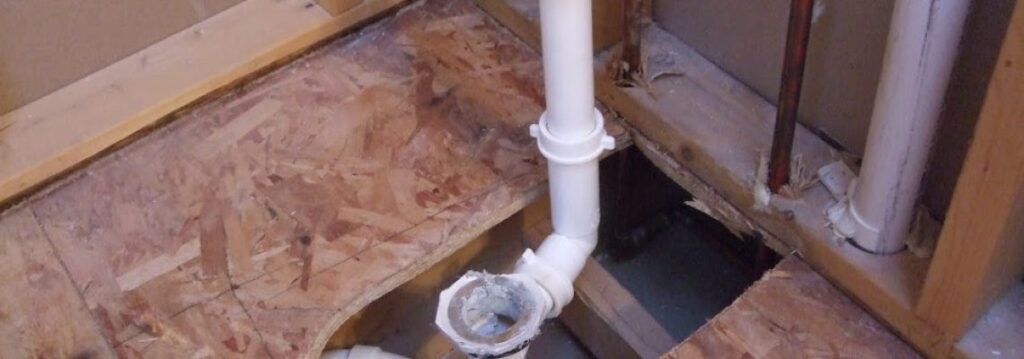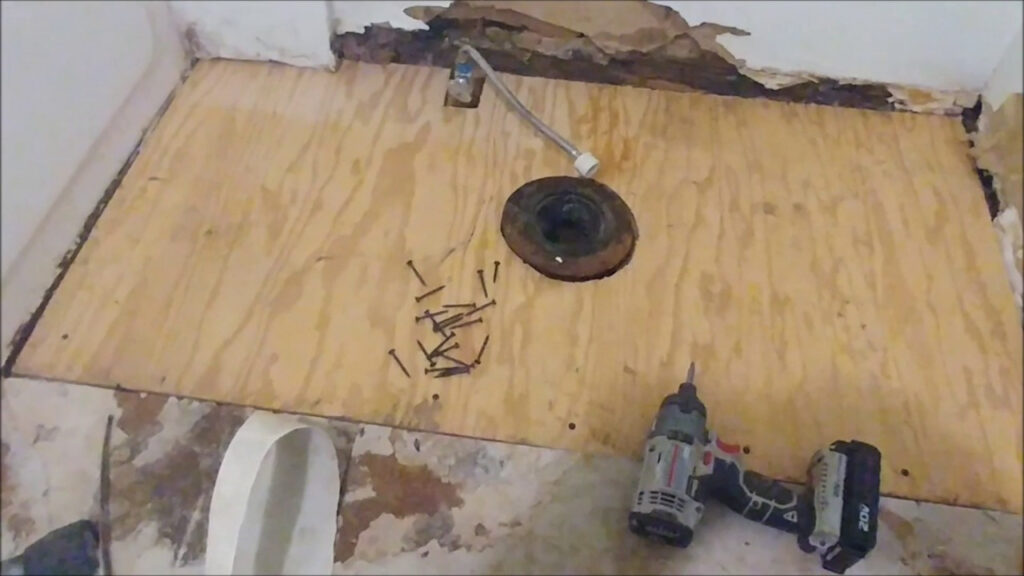Introduction
Did you realize that a trap is necessary for a shower drain? More precisely, the U-shaped portion of the drain pipe, known as a P-trap, prevents sewage gases from entering your bathroom. It could be hidden under the floor so you can’t see it, but all restrooms must have it by law. You put your family at risk if your bathroom is unequipped or blocked.

P-traps are required by law for all household fixtures which connect to the main plumbing system. So, a P-trap should be installed if your home has a sink, shower, or toilet. P-traps are curved pipes that keep sewer gases and animals from entering the house through the drain pipes. Not only is it the law, but it’s also common sense to have a P-trap installed.
Does the shower drain need a trap?

From the safety and legal requirements standpoint, a P-trap must be installed for a shower drain. The trap prevents dangerous gases from entering the home through the drain. In addition, it keeps animals and other objects returning to the house due to its shape and design.
P-traps are required in the United States and many other countries worldwide to protect people from potentially harmful gases. Some examples of these gases are methane and hydrogen sulfide, which are highly flammable. Other gases, such as carbon monoxide, can amount to oxygen in a home and be poisonous, leading to suffocation. Without a P-trap in the shower drain, these gases could fill the house and cause damage or death.
It’s crucial to remember that every shower is a structure with its unique P-trap. This implies that no restroom, even those close to one another, may share a P-trap.
Therefore, P-traps play an essential role in ensuring safety in the home.
How does a shower drain trap work?
The P-trap in your shower functions similarly to your bathroom sink or toilet. Its purpose is to keep gases and objects from flowing back up while allowing things to flow down the drain. A typical trap consists of these parts:
The inlet
Most people think the inlet is the drain hole in their bathroom floor. Hoaccuraterbasin accurate inlet is the point where water enters the P-trap. The P-trap is a U-shaped pipe that traps water to prevent sewer gases from entering your home.
The inlet is located at the bottom of the U, where water enters the trap. This can be unclear because the inlet is not always visible – it is often hidden behind a wall or sink. However, knowing what to search for, you can easily find the inlet and ensure that functions function properly.
The downward bent
You may wonder if you need a trap if you have a shower drain. The answer is that it depends. A trap can provide several benefits, including trapping sewer gases and animals so they can’t enter your home. It can also help prevent clogs by catching hair and other debris before it can enter the drain.
For these reasons, installing a trap is generally a good idea if you don’t already have one. If you’re stuck and don’t know what to do, you may always contact a professional to assist you.
Keep in mind that traps need to be cleaned out from time to time. This can be done using the cleanout feature in the middle of the trap. To clean out your trap, remove the plug and allow the water to drain out. Then replace the plug, and you’re good to go.
The outlet
Water exits the trap through the outlet and enters the sewer line. The shape of the shower drain trap dictates its name. The U-trap is another term for a P-trap with a “P” form. On a vertical plane where water flows downhill, the S-trap has an “S” form. As mentioned above, the operation of all drain traps is the same.
Shower drain P-trap depth

A shower drain P-depth trap isn’t set in stone; instead, it depends on the size of the pipes or fittings. The flooring securely covers the drain trap material and works fine; don’t worry about its depth.
There is no standard for the depth of a shower drain P-trap, as it is only based on the size of pipes or fittings used. It would help if you didn’t worry about its depth as long as it is securely covered and functioning properly. The P in the P-trap stands for perforating that. It has a hole in the center that goes down to the sewer line. The rest of the trap is filled with water to create a seal that prevents noxious gases and odors from escaping through the drain. When choosing a shower drain, ensure that the P-trap is properly sized for your application and that your flooring material will cover it.
Distance the P-trap from the shower drain.
It is important to have the P-trap as close to the shower drain inlet as possible for the best results. The P-trap and shower drain must be at least 5 feet apart.
As you increase the distance between the shower drain and the P-trap, you also increase the chances of smells entering the home. These smells can come from the sewer line or decaying dirt in the section between the drain and the P-trap. You are keeping the P-trap close to the shoavoidst to avoid these smells.
Shower P trap dimensions
A P-trap for a shower drain must be at least 2 inches in diameter. This differs from other rain traps, such as the bathroom sink (1¼ inches) and the kitchen sink (1½ inches). The pipe’s diameter used to build the trap determines its size.
When viewed from the side, the size of the trap is determined by the thickness of the pipe that curves to form the P-trap. The thicker the pipe, the wider the curve; therefore, the bigger the trap. The minimum size for a shower trap is 2 inches, but you can find them in sizes up to 4 inches. If you have a large shower or one with multiple showerheads, you may need a 3 or 4-inch diameter trap.
How does a shower drain work?
When you shower, all the water that runs down the drain must go somewhere. But have you ever considered how it gets there? The procedure is simple to apply.
Water from the shower drain hole penetrates the bathroom floor and runs directly into the shower P-trap or a horizontal pipe before the P-trap. It is in the drain P-trap; incoming water displaces and directs it to the main sewage or septic tank.

If you’re wondering where the shower drain leads, the answer is that it leads to the main sewer line. The shower and toilet drain lead to the same destination, the sewer. So you are taking a shower, think about all that water making its way through a complicated system to end up in the sewers eventually. It’s amazing how something so simple can be quite complex when you think about it!
How to clean a shower P-trap
There are two techniques for cleaning the shower drain:
By removing the P-trap before beginning, you’ll need the P-trap on the shower floor and remove any flooring covering. It is essential to have a bucket handy to avoid spills when disconnecting the P-trap from the outlet pipe. Undo any nuts or screws, keeping it in place so you may liberate the P-releasing iten released, soak it for 15 minutes in a combination of white vinegar and baking soda, then brush it before washing it with clean water. To finish, return the P-trap by connecting to the outlet and returning the floor covering and drover into place.
By not removing the P-trap, Add half a baking soda to your shower drain, then pour a cup of white vinegar. Let that sit for 15 minutes before flushing with hot water. You can also clean your shower drain using a plumber’s snake or an enzyme-based cleaner – avoid harsh chemicals that may damage your bathroom plumbing.
To maintain good order, follow these cleaning procedures when cleaning the shower stall.
How to install a shower drain trap
Installing a P-trap is necessary if your bathroom doesn’t have one or needs replacing the existing one. You’ll need to install one in any case. Locate the P trap in the middle of the shower and as near the shower drain as possible in new bathrooms. Installing a shower drain trap is straightforward:
- Cut the subfloor around the drain.
Cut the floorboards surrounding your bathroom’s drain using an electric saw. Make it 12 by 12 inches wide. The section you removed is at least above the floorboards so that you can lay the subfloor back afterward. If you cut too deeply,
- Create space around the drain

Remove the P-trap by prying out the underlayment with a prybar. Cut the drain pipe as soon as possible after removing the old P-trap. If you’re installing it, make sure the drain pipe is cut to the same length as the size of your P-trap. Measure how far your P-trap extends from one end of a “U” shape to another, and divide that number by two (or three if you’re installing it).
- Connect the P-trap to the drain pipe.

Use a connector and glue to join the P-trap to the horizontal section of the drain pipe. The other end of the P-trap should be pointing upward and placed directly below the shower drain.
- 4. Reinstall the floor
After you’ve cut the subflooring to fit around the P-trap, measure the distance between the subfloor and the trap. Cut a pipe with this length and diameter, then reattach your shower drain and cover. Once an hour has passed (to allow time for bonding), feel free to take a shower as normal!

What are vent pipes?
The vent pipe is a vital but often overlooked component of your home’s sewer system. Its purpose is to allow gases from the sewer to escape into the air rather than enter your home. Without proper ventilation, these dangerous gases can become a serious health hazard for you and your family.
Vent pipes and P-traps work together to keep sewage gases away from the residence. P-traps in toilets, sinks, and shower drains prevent gases from returning to the location, whereas vent pipes enable gases to escape the outside air. This also helps to keep the air pressure in the pipes balanced.
Shower trap problems and fixes
When a P-trap fails, it is usually due to the failure of one of its functions. The following are some examples of shower drain P-trap failures:
Clogging
Several things can cause a clog in your shower drain, such as solid items, calcium build-up, etc. You can unclog the drain with a plunger or pour a cup followed by 2 cups of white vinegar. Rinse with hot water afterward.
A plumber’s snake is also great at unclogging a shower drain P-trap. Enzyme-based cleaners can also be used to clear the clog.
Prevent future clogs by installing a cover on your drain to keep out larger objects and dirt.
Drying up
A P-trap works by holding water in it. This prevents sewer gases from coming through the drain and into your home. If you go without using the shower for a long time, the water can evaporate and cause problems. To prevent this, pour some water down the drain once a week. Another issue that can cause a dry P-trap is a leak somewhere in the system. In this instance, pipe-specific is used to replace or repair the item.

